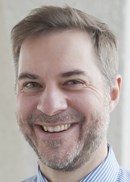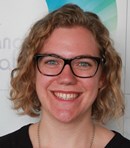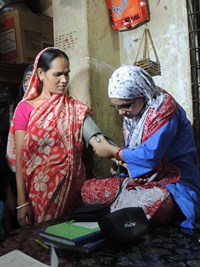Microinsurance, the microfinance family’s less glamorous and less understood new arrival, is urgently needed to protect the poor and reduce poverty. It allows farmers in Kenya to keep their livestock even when drought hits. It allows women in Guatemala to access cancer tests and treatment for the first time. It allows microentrepreneurs in Haiti to get their businesses running again immediately after a hurricane or an earthquake.
First the good news: about 500 million low-income people earning less than $2 a day had access to insurance products in developing and emerging countries in 2012, up from 78 million in 2007. Often the missing piece in the financial inclusion puzzle, microinsurance protects low-income people against health, life, funeral and agriculture risks.
Evidence increasingly shows that it protects them financially and helps break the cycle of poverty. Microinsurance can be a viable business model and is increasingly attracting the attention of local and multinational insurance companies.
The bad news: billions of poor households still don’t have access to good value insurance products, with devastating effects. Microinsurance is available on a significant scale only in a handful of countries like India, the Philippines, South Africa and Mexico. Glaring geographic disparities in coverage persist. In many developing countries the insurance industry does not have the know-how and tools to serve this market effectively.
Foundations, companies and individual donors might think that building microinsurance markets for the poor is best left to bilateral agencies. We beg to differ. We believe that private donors can make a tangible difference with targeted interventions.
After six years of working closely with insurers and other public and private insurance stakeholders worldwide, we know how to significantly increase the access to microinsurance globally and at a large scale. In this blog, we would like to share a few concrete examples of how private donors can be catalysts in accelerating insurance markets for the poor.
Market development: convening stakeholders
All insurance stakeholders – including regulators, multinational reinsurers, brokers, NGOs and cooperatives – have to work together to make insurance markets work for the poor. Bringing together stakeholders in countries like Indonesia, Nigeria and Senegal, which have high potential for microinsurance market development, is crucially important at this juncture.
Take Zambia, for example. In 2009, the International Labour Organization (ILO), UN Capital Development Fund and FinMark Trust convened industry representatives, potential distribution channels, consumer advocates and donors to discuss the findings of a diagnostic study and create a roadmap to promote microinsurance in Zambia. This included training and workshops for insurers and distribution channels, changes to insurance regulations, and financial education campaigns. The result: the industry has launched five new microinsurance products that now protect 220,000 people.
Product development: understanding what clients want
Low-income populations are an important growth market for national and international insurers. But reaching low-income clients can be difficult. It requires rethinking traditional marketing approaches and going back to square one with an open mind. Not an easy task. Insurers that strive to be microinsurers need tools and support, otherwise reaching low-income clients will remain too risky and too low a priority for a very long time.
Here is an example from South Africa that worked. At first, Old Mutual’s retail funeral product called ‘Pay When You Can’ was too complex and sales were disappointing. A client value analysis using the ILO’s PACE (Product, Access, Cost and Experience) assessment tool helped Old Mutual simplify the product and meet client needs. More insurance practitioners need access to PACE and other tools so that they can experiment and enhance the value they offer low-income clients.
Peer learning: putting good practices on a plane
Over the past couple of years we started experimenting with peer learning among microinsurance industry pioneers. In 2013, the Microinsurance Innovation Facility went one step further. We piloted an exchange of microinsurance practitioners from La Positiva in Peru and Old Mutual in South Africa. The results were encouraging. They jointly developed solutions to cope with challenges they face serving low-income rural populations. Enhanced knowledge management and capacity building will allow organizations from geographies as diverse as South Africa and Peru to learn from one another, accelerating the development of these markets.
These are just a few examples to demonstrate that targeted interventions can make a big difference, driving the growth of microinsurance markets to protect the poor. Microinsurance matters, and donors and foundations can play an important role in ensuring it reaches scale.
Craig Churchill is team leader and Alice Merry is knowledge officer at the ILO’s Microinsurance Innovation Facility.
Established in 2008 thanks to an initial grant from the Bill & Melinda Gates Foundation, the ILO’s Microinsurance Innovation Facility aims to increase the quantity and improve the quality of insurance for the working poor.





Comments (0)